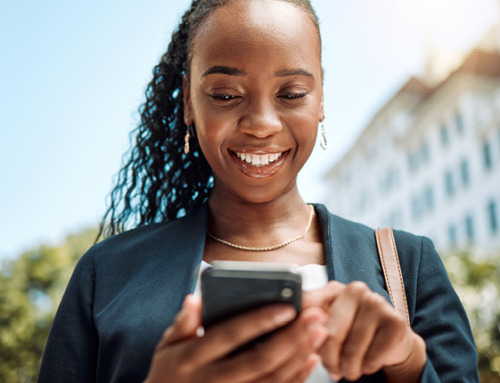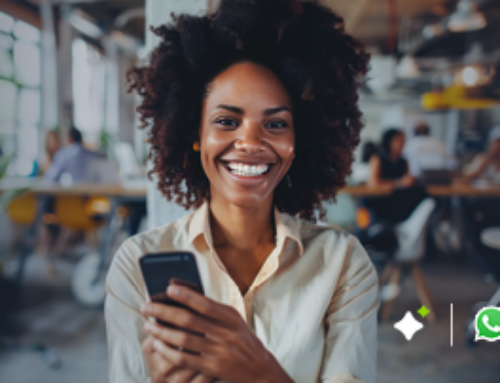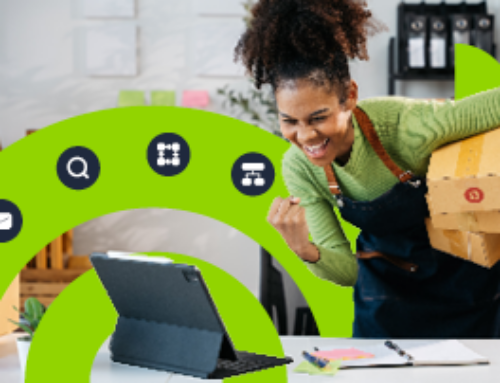Our latest marketing guide is all about building conversion funnels, so your online sales can run automatically – even when you’re off the clock. But what exactly goes into a funnel? A typical automated online funnel consists of about six of the following interconnected steps…
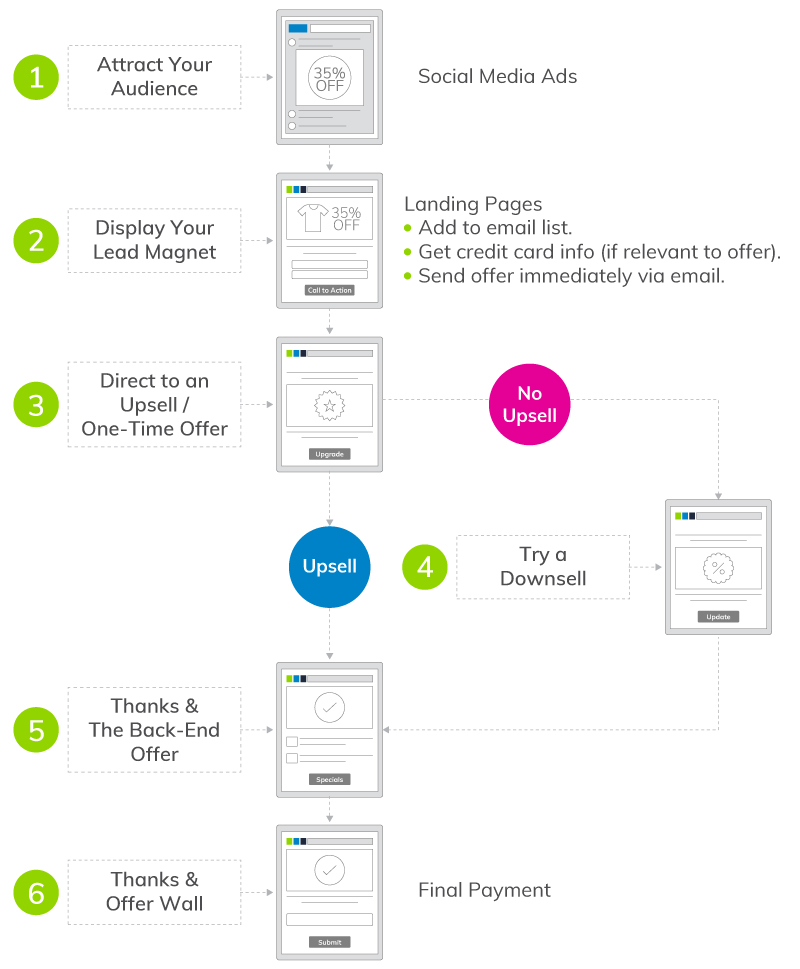
Step 1: Attract Your Audience
This is where you catch your audience’s attention with an ad for your lead magnet. Where you target your audience will depend on where they are. It can include social media, forums, email, your website… even physical locations.
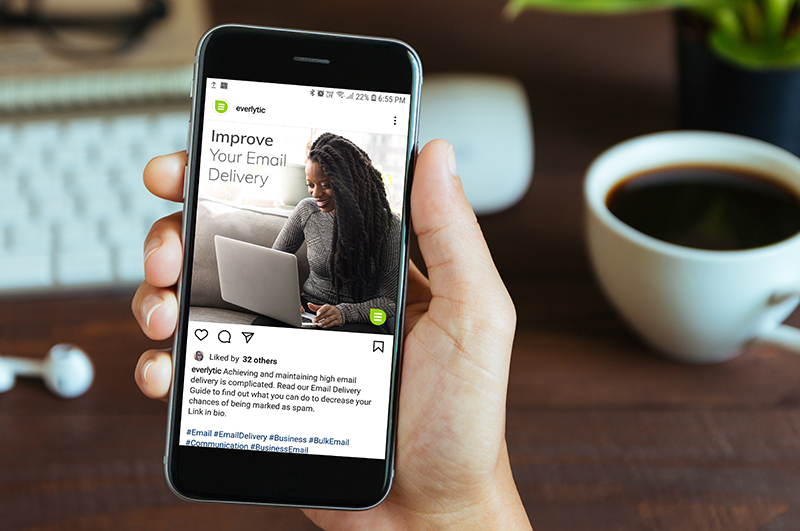
Step 2: Display Your Lead Magnet
This consists of a high-converting landing page (often referred to as a squeeze page) designed to intrigue the visitor to give you their contact details in exchange for something of low cost and high value (aka ‘bait’). Options here often include ebooks, webinars, product samples, videos, courses delivered as email sequences, case studies, or reports.
In our funnels guide, we explain how you can use the ‘Yes Ladder’ when mapping our your funnel – a psychological principle that says people are more likely to say yes further down the line if they’ve said yes to smaller asks first. You can use your first ‘yes’ from the Yes Ladder to determine what this initial offering will be.
Note: the key at this point isn’t to make a profit – it’s to capture a lead’s contact details and move them to the next step, so you can nurture them to making progressively higher purchases through the journey. Many businesses may even make a loss on this first step with the intent to recoup these costs further down the funnel.
This page will have a form that enables the contact to opt in to your mailing list and, if it’s a paid offer, progress through a payment gateway that collects credit card details. Be sure to speak directly to your visitors’ needs in the content (and possibly create a video too) and include plenty social proof to position yourself as an expert.
Read more about landing pages in our blog series: How to Get the Most Out of Landing Pages.
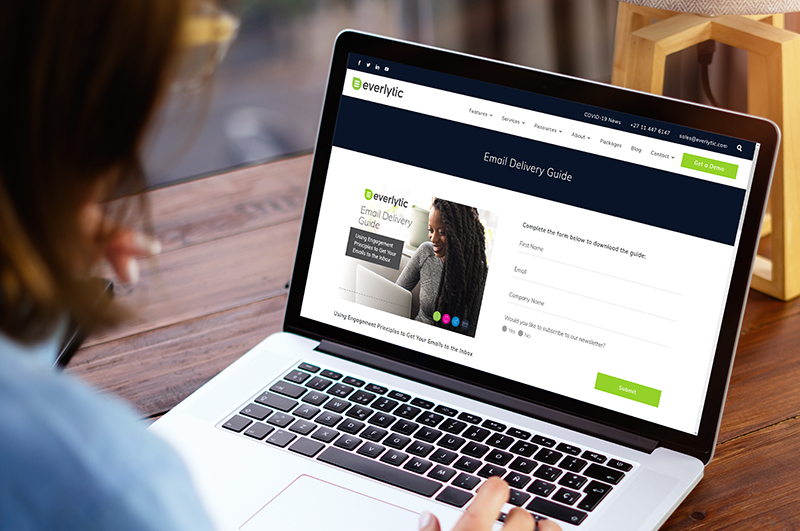
Send Offer Immediately via Email:
Once they’ve given you their information, send them what they asked for via a welcome email. In this email, focus on giving them value, over-delivering (where possible), and being clear on how they can receive your offer (either via a download or by whatever’s needed to deliver it). This is where you build trust, proving that you’re worthy of doing business with.
You can also subscribe them to an automated messaging workflow that upsells related specials to them again in time, or, for something like a webinar, builds their excitement for what’s to come.
Step 3: Direct to an Upsell
Now that you have a lead who is interested in what you have to offer, direct them immediately to an upsell landing page. This should preferably be dominated by a video thanking them for opting into your lead magnet and explaining the value of the upsell.
The upsell should build on what they’ve already got from your lead magnet, providing them the next logical level of support. E.g.: If your lead magnet is a weight-loss workshop, the next step would be something like recipes, eating plans, or workout videos.
Ideally, if your lead magnet is rung one on your Yes Ladder, an upsell would be around rung three. Why rung three and not rung two? See step 4 below.
Tip: One-Time Offers
If you want to add a sense of urgency here and boost sales, you can also provide a discount on the upsell to sweeten the deal.
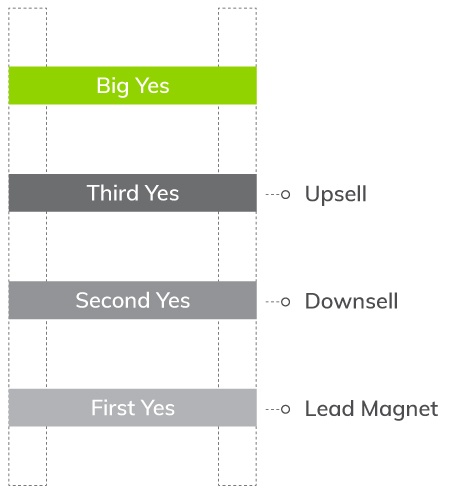
Step 4: No Upsell? Try a Downsell.
This is where rung two of your Yes Ladder comes in and it’s here only for people who don’t take you up on the upsell. It’s still an upsell from the lead magnet, but it’s more affordable than the upsell you offered them before.
For example, if you offered tickets to a conference in the upsell and they didn’t buy, try offering them recordings of last year’s conference, or the option of a payment plan.
Step 5: Thanks & Back-End Offer
This page will thank customers for participating in what you have to offer. List everything they’ve agreed to purchase on this page, including any add-ons from the funnel, and provide a total amount payable.
As an optional extra, you can add a back-end (aka: the big yes) offer on here. You can use a video sales letter format for this. The right tools will enable you to have a checkbox to add this on quickly and easily to what they’ve already opted in to purchase. It’s a good place to provide more social proof, like testimonials, to remind them of the value they’re getting.
Step 6: Thanks & Offer Wall
Once they’ve made payment via the payment gateway on step 5, share a final thank-you page, getting them excited about all the value they’re about to get from their transaction with you. Additionally, you can include an offer wall, where you share other lead magnets you have available. Your biggest fans will love getting more free or low-cost value from you.
This is also when your email automation begins.
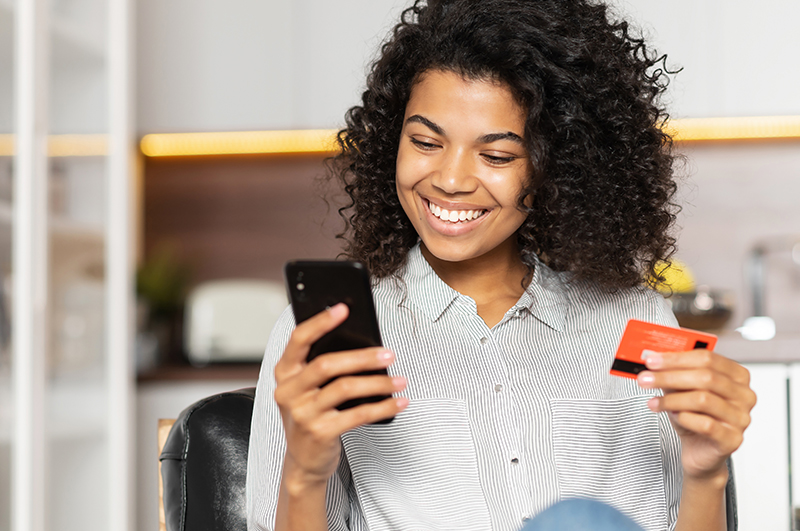
Automated Email: An Essential Lead Nurturing Component
Your lead magnet is designed to capture a lead’s contact details. Why? Because once a contact’s opted in to one of your offers, you can send them other offers related to this one via email, to support them. Alternatively, if they abandon their cart on the upsell / downsell journey, you can remind them of the value they’ve left behind, encouraging them to return.
Depending on what they have or haven’t purchased, now’s the time to customise the email journey. For every purchase, you can send a relevant email with the details they need to redeem it.
In Everlytic, you can also update your contact data if they click certain links in an email, so you know where in the funnel they are. With this information, you can use email workflows to tailor the messaging, so you can upsell to them in future.
Learn more about advanced email automation in Everlytic’s Guide to Advanced Communication Automation.
Want to know how to structure a funnel for specific purposes, like generating leads and increasing sales? Check out our free funnels guide. In the funnel-stacking section, you’ll even learn how to layer funnels, so they run one after the other, sending customers to new, related funnels, at times when the offering in the next funnel becomes most needed.



